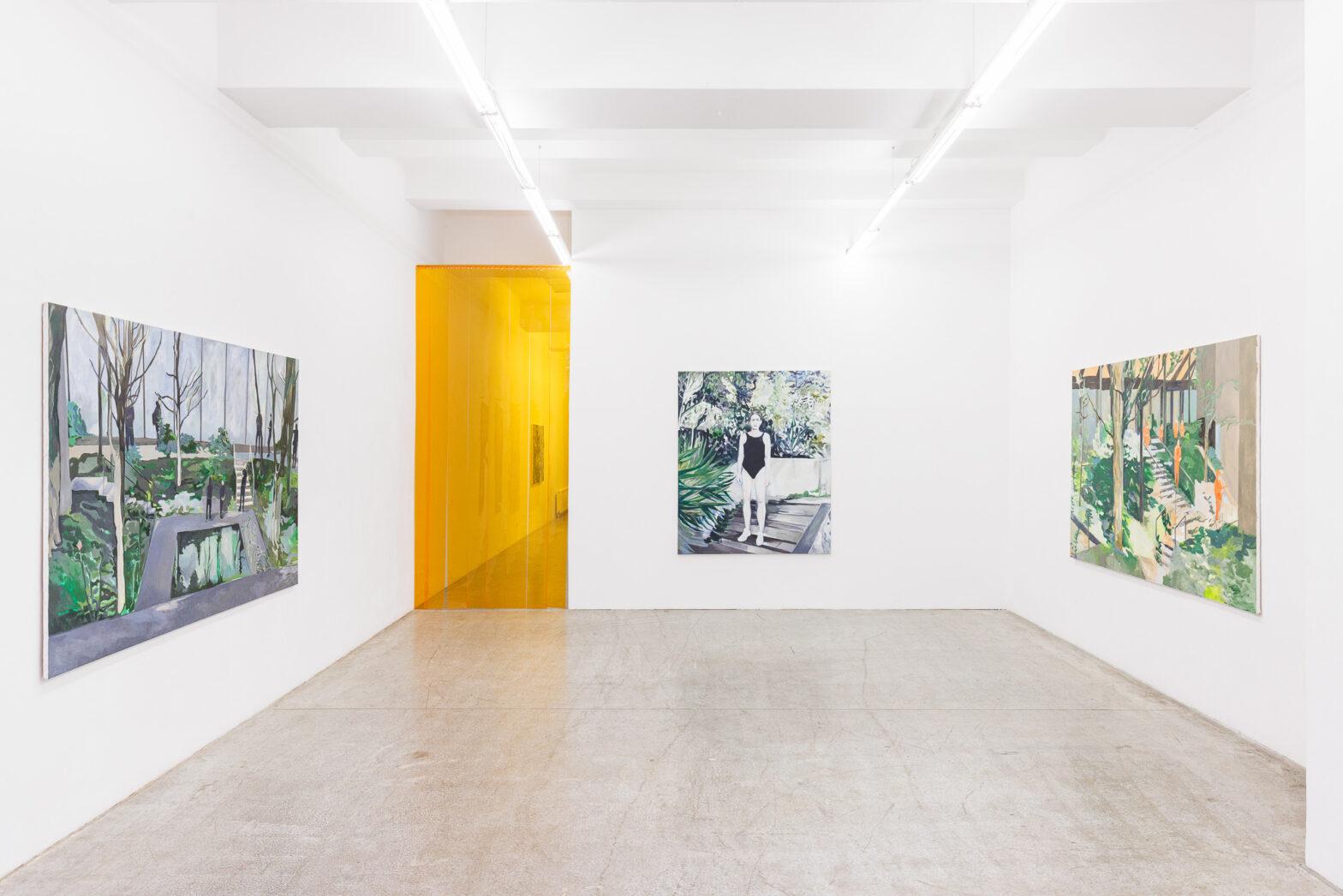ALBA Gallery, Vienna | March 24 – April 29, 2023
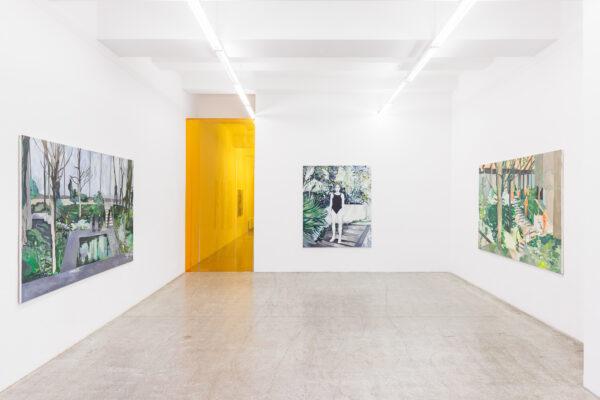
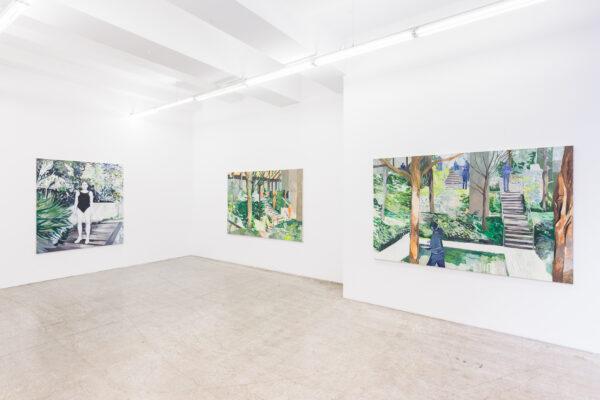
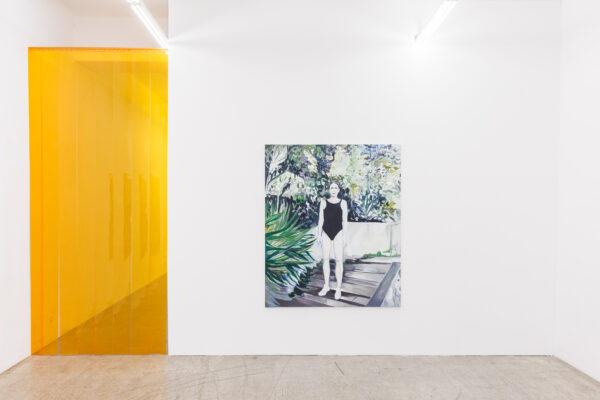
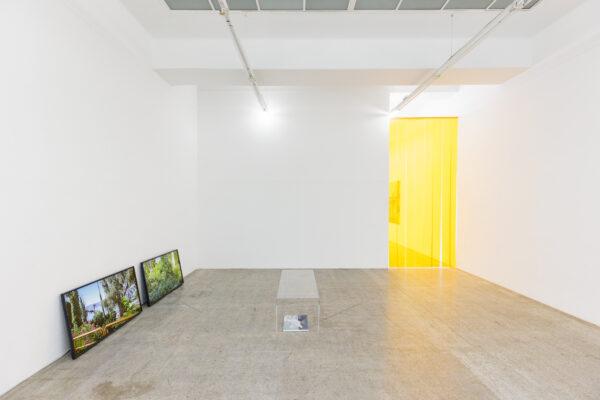
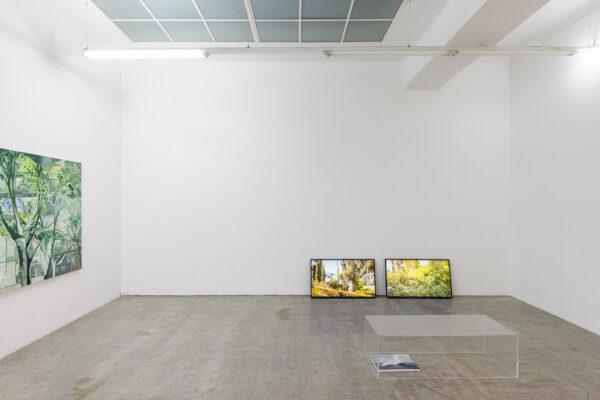
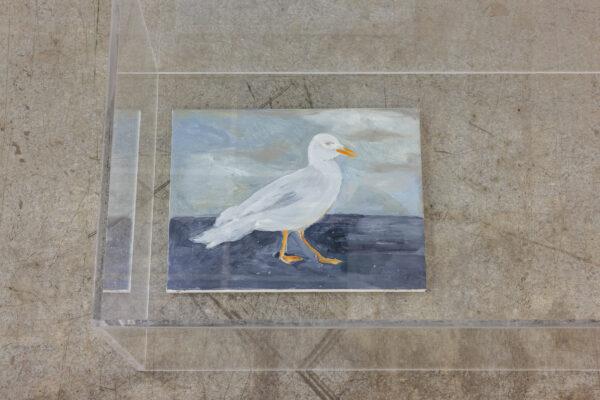
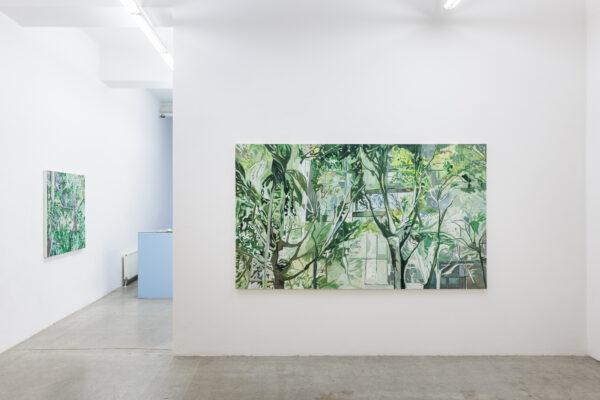
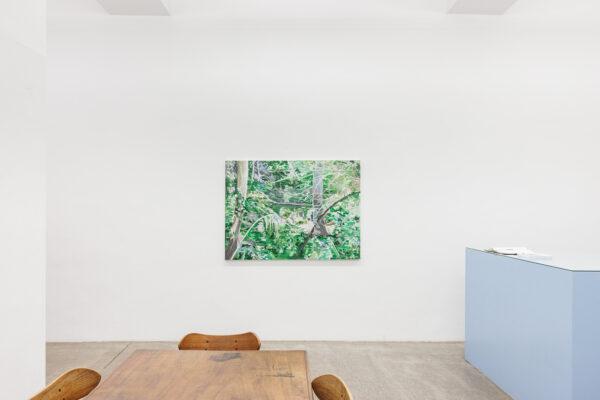
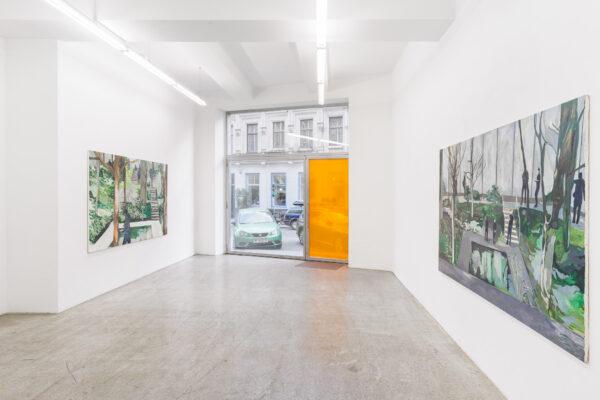
Green foliage, tall trees, glass facades and recurring staircases: What may appear like everyday snapshots and unagitated encounters of anonymous personae set into floral sceneries, is more intriguing and disturbing than meets the eye at first. The paintings of Lidija Delić are inhabited by a range of objects and artifacts in environments not further defined by coordinates in space or time. Non-individualized human figures walk slowly up and down staircases, pausing, breathing quietly, observing the surroundings. An unknown light source, whether naturally given or artificially introduced, casts shadows. Yet there seems to be no wind, no instance of an outside that marks a relationship to others. We quickly realize that the plants are the true protagonists of this world, concentrated to and being kept save by versions of glass structures evoking the image of biome domes or a terrarium.
Rather than falling into classical categories of landscape or genre painting, the artist’s works are sentient still-life histories, gesturing to scientific evaluations of liminal states of climatic and societal collapse. The liminal in her works though is not to be read as a waiting and waning in-between two poles, but as an activa – as opposed to the silent contemplation of vitae contemplativae. This entangled contradiction, the quietness of an active state permeating the canvases, evolves on perpetually chancing temporal, spatial and emotional planes. While the wide formats are exhaling the air of fruitful introversion, one portrait format, almost square, is making us hold our breath due to its confrontational quality. A female figure in a black bathing suit stands tall, life-sized, looking back at us. It is the only self-portrait Lidija Delić has painted to this day and the only individual subject within the cosmos of this exhibition. The palette she uses differs from the other paintings, being cooler, more intense, with blue hues and an eerie feeling to it. Something about the landscape has shifted and the perception of bodily representation with it – the self has altered its state.
The artist’s body in this altered state has become a symbolic one, in the dimension of Thomas Hobbes’s Leviathan: an intangible, massive incorporation subsuming the concepts of society, the nation-state and human-made, artificial structures. While the subject partially stands in for such anthropocentric systematics, the incased nature is instrumentalized to play the role of its opponent. This correlation solidifies in a two-channel video work made accessible on a low height, helped by a little Perspex bench. Animated by overlapping sounds of seagulls screeching, drone-noises and ocean breezes, we are spinning slowly at 360° degrees, catching glimpses of architecture in fragments and ruins as well as their takeover by vegetation. We encounter a romantically beautiful scenery, wild again after no longer being cultivated although not yet naturalized or fully recovered from human mingling. It depicts an abandoned hotel complex in Montenegro – but what does this pointing to a specific locality matter? Topography and time-zones are interchangeable, an in the end, nature will prevail. What remains of a world is a biological force, most powerful in its silent, steady evolution – still, life.
Many metaphors and words may comprise this inherent quiet that nurtures the works of Lidija Delić. It is in tune with her ongoing fascination for the fictitious worlds of James Graham Ballard, for speechlessness vis-à-vis topoi of an ever-expanding fragmentation of worldviews since the post-structuralists entered the stage and for the aestheticized endeavors of environmental safekeeping in movies like Silent Running. Finding her inspiration in a pre-pandemic world and the sublime jungle of the Ford Foundation Building’s courtyard in East Midtown Manhattan, New York, the artist has made its uncanny existence her point of departure. The last words are far from being spoken in these regards, but for now let us conclude with a gaze in the distance and some insights through active contemplation:
The sky got bluer and more blue and the green fresh banks of foliage were motionless in the warmth, and the blocks of lights and shadow that bisected the streets were like the eternal primordial shapes that lie on the faces of mountain ranges and seem to come from inside them. They city was quiet and mostly empty to humans, so that it felt as though it were itself more than human and could only reveal it when there was no one to see.”
Rachel Cusk, Second Place, London 2021, p. 5.
